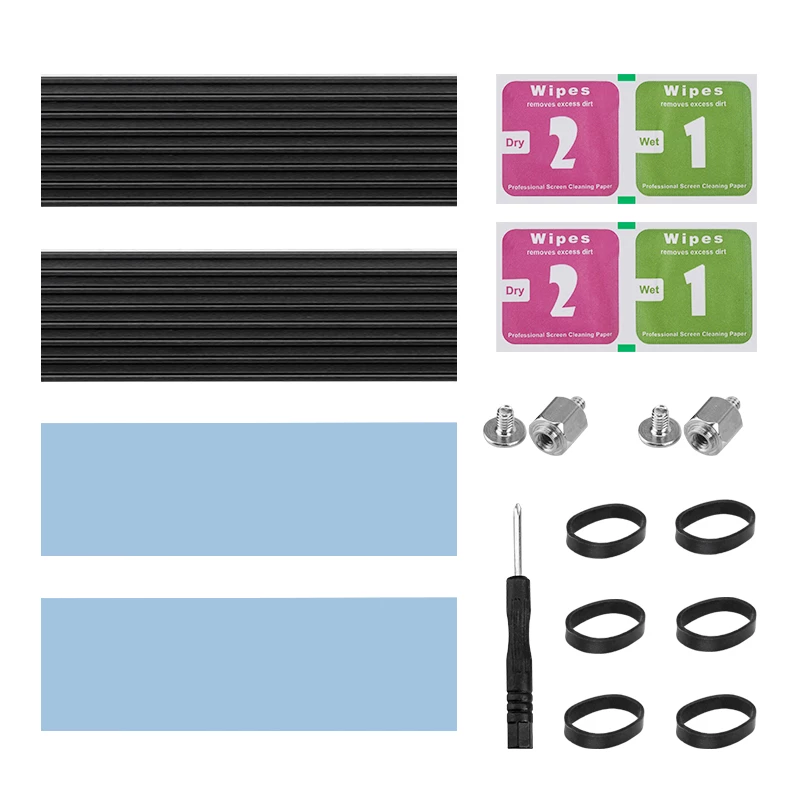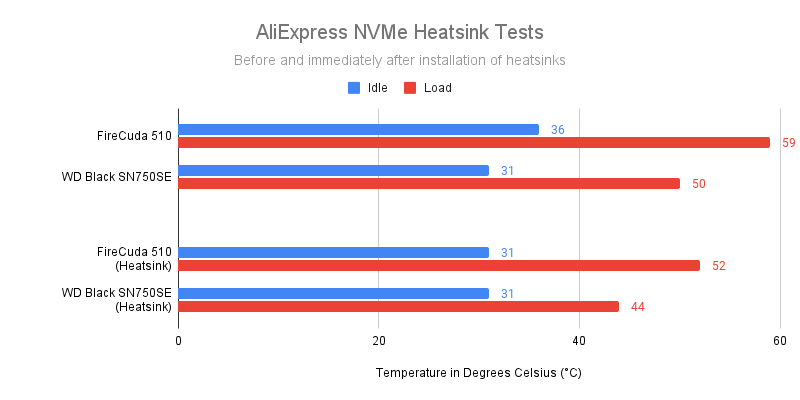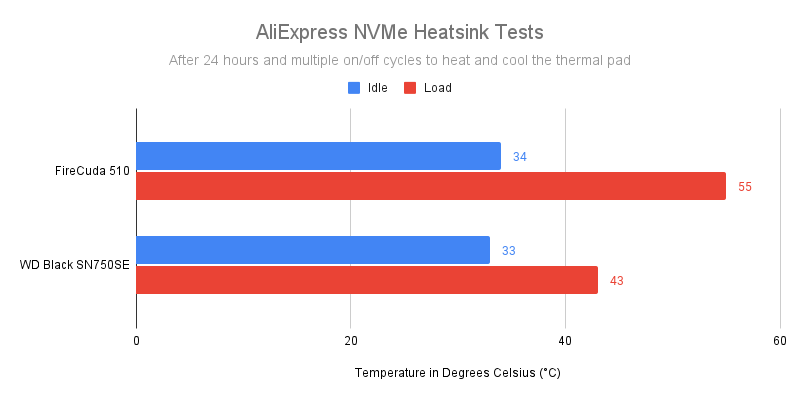Table of Contents
Introduction
I think we’ve all seen the cheap NVMe SSD heatsinks available on sites such as Amazon and Aliexpress and more often than not, most of us will think “what’s the worst that could happen?”
Much like the Dr. Pepper television adverts of old though, it’s not as simple as it seems. Having purchased 2 NVMe SSDs, I thought I’d give these heatsinks a try. I’m using the Seagate FireCuda 510 1TB and WD_BLACK SN750 SE 500GB for these tests with the Seagate above the GPU and the WD_BLACK drive below it. As for the heatsinks themselves, I saw the below-pictured 2-pack for around £1.80 ($2.25) on AliExpress, waited the 3ish weeks for it to arrive and got to work!

Installation Thoughts
I wasn’t expecting much from these from the get-go, though it was a little funny to see that the “wet” wipe to help clean your drive before applying the thermal pads was bone dry. Mix up in the factory? Or has it just sat there for years? Who knows.
The installation was straightforward enough though. You wipe down the drive with the included wipes to get any dust off, stick the thermal pad down and lay the metal heatsink on top of that (you can leave the sticker on the drive itself in most cases as they’re usually useful thermally themselves!) Finally, there are 3 included bands that hold everything firmly together and from what I can see, everything seems sturdy enough.
The Results
First up we have a comparison of the 2 drives before, and immediately (around 30 minutes) after the installation of the heatsinks at both idle and after pushing some load through them. Idle was judged as a freshly booted PC, left alone for 30 minutes. To heat the drives up, I put them through 10 consecutive passes of CrystalDiskMark. All tests were carried out in a room at 24.1 degrees celsius and it should be noted that neither of these drives contained an OS
Before & Immediately After Installation

At first glance, it’s looking OK. Whilst the temperature on the WD_BLACK drive (below the GPU) didn’t budge, the FireCuda did drop 5 degrees at idle. Under load though, there was a drop of 7 degrees for the FireCuda and 6 degrees on the WD_BLACK. At this point, you’re probably wondering why I’ve taken the tone that I have so far with this piece. Well, keep reading…
After 24 Hours

Having left things to settle for 24 hours and putting the drives through a handful of power cycles (allowing things to drop to ambient and come back up again) I decided I’d do some more testing and I’m actually glad that I did.
The idle temperatures on both drives had crept up by 3 degrees on the FireCuda and 2 degrees on the WD_BLACK and under load, we see the same 3-degree increase on the FireCuda. The WD_BLACK actually seemed to drop a degree, though this is within the margin of error realistically.
Do M.2 Drives Need Heatsinks?
It’s going to depend on how the cooling/airflow in your case is, how hot your ambient environment is and what you’re doing with your drive really. They’re relatively inexpensive though so adding one won’t break the bank and can help to prolong the life of your NVMe drive, as well as ensure that it runs at its expected speeds for an extended period of time thanks to preventing thermal throttling.
The Conclusion
For just over $1 USD per heatsink, you really can’t be expecting the world but are they worth the tiny amount of money? If you have a motherboard with better M.2 slot placement than mine and great airflow through your case then maybe you’ll see a larger difference than I did. If you have good airflow though, and your GPU isn’t pumping out hot air over one of your slots then you may not need to worry about a heatsink at all.
Ultimately though, they’re just “OK”. They’re not going to break the bank and they’re not going to be miracle workers. They do drop the temperatures under load so if you’re doing more stressful tasks somewhat regularly and don’t have the budget to stretch for higher-end, beefier coolers then this could be a good way to shave a few degrees off, depending on your drive.
I’d be interested to hear in the comments below if you’ve purchased these same heatsinks and seen the same thing. Perhaps you’ve gotten much more benefit from them? If you have, let me know what case and drives you’re using, it would be great to compare!
Before I let you go, if you’re interested in more of my benchmarking/comparison content, do check out my Best microSD Cards for Single Board Computers post, or my comparison of the original and new Raspberry Pi Zero W models!
p.s. I’ve since started using the FireCuda as my OS drive and if I adjust for a slightly higher ambient temperature now, it’s running 7 degrees warmer than it did in the 24-hour graph above. Take that as you may!